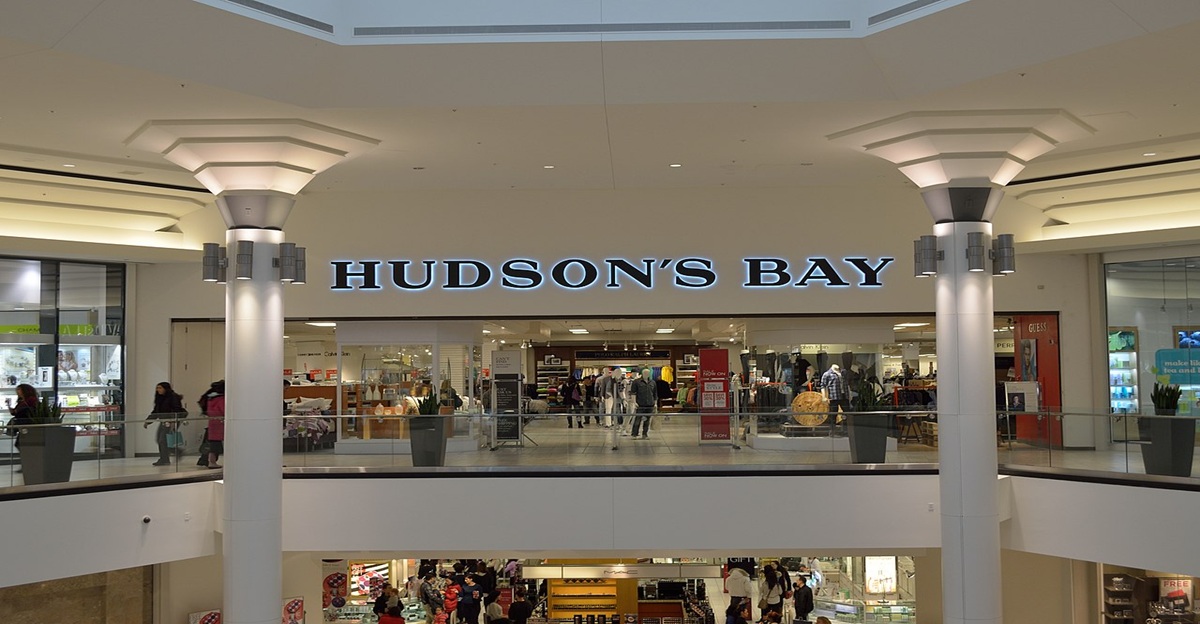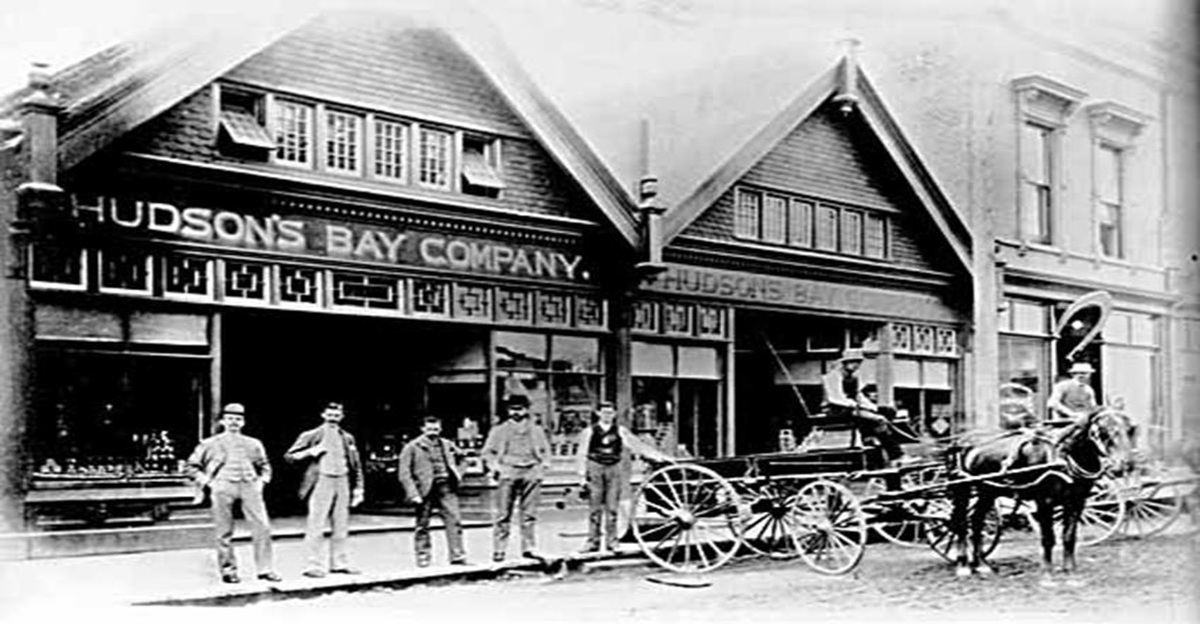
Hudson’s Bay, the oldest department store in North America, is now getting a second chance, after facing the verge of liquidation. Only months ago, the iconic brand announced its plans to shut down all its stores and sell off its inventory.
However, in an unexpected turn of events, a Canadian Tire Corporation stepped in and purchased the intellectual property of the company for $21.4 million. In a fast-expanding world where brick-and-mortar retail is fading, the rescue came just in time, giving new hope for a legacy brand. The comeback is much more than a sale; the brand is aiming at a full-scale reboot. So buckle up and see what’s in store.
The Harsh Retail Reality of Struggling Malls

When was the last time you wandered through a shopping mall and noticed the increasing silence? With foot traffic declining as e-commerce dominates, there is a loss of many anchor stores, and malls are facing a slow demise.
Once vibrant social hubs, many store centres are now haunted by low revenue and empty storefronts. According to experts, up to 90% of malls face complete vanishing within a decade. The sobering view of how malls are steadily declining is proof that a retail apocalypse is upon us and sweeping through America, one store at a time.
The Fall of Retail Behemoths

Looking behind, department store models were built for another era. With their massive floor plans and slow adaptation to trends, high operational costs are quickly turning these once giants into sitting ducks. While more and more consumers shift towards online shopping, retail apps, and discount department store chains cannot keep up.
The heavy inventory and outdated processes are making real-time change next to impossible, bringing failure to evolve that spells disaster. While some brands still stand a fighting chance with the right intervention, others are fading into the background.
The Unexpected Hero

Alas, you may expect a retail comeback from inside the industry; however, to our surprise, see an automotive giant, the Canadian Tire Corporation, step in. They are rewriting the rule book with their purchase of Hudson’s Bay’s intellectual property, becoming a surprising saviour of an iconic retailer.
Though the move seems odd, the Canadian Tire company has quite a history of acquiring recognizable brands. So, it’s not only a buyout but a bold bet verging on pride and customer loyalty.
The Oldest Department Store in North America Lives On

Hudson’s Bay Department Store, founded in 1670, is one of the oldest retailers and a true Canadian heritage. Everything from fur trading posts to the polished department stores speaks of a brand evolving around the continent itself.
The Hudson’s Bay, with its signature stripes, is as Canadian as it comes. For many individuals watching this heritage go under, it felt like saying goodbye to an old friend. But with its sudden rescue, there is renewed excitement and nostalgia.
The Assets Behind the Buyout

You may wonder why Canadian Tire Corporate made this significant purchase. Well, to them, more than a typical buy-a-name situation, but rather a portfolio of recognisable brands. It has also acquired the rights to the popular HBC multicoloured stripes, which are synonymous with Canadian retail.
All these trademarks offer some serious brand power that Canadian Tire can now integrate across its retail ecosystem. The deal is a remarkable mix of retail nostalgia and design equity, which are two rare assets in today’s digital market platform.
Not Their First Rescue

On the other hand, Hudson’s Bay isn’t the first brand to get scooped up by Canadian Tire. The company also owns department stores such as Mark’s, SportChek, and Party City Canada. They have an intentional knack for curating a well-balanced portfolio of beloved Canadian brand names.
As such, with each acquisition, Canadian Tire strengthens its national presence, broadening its customer base and deepening brand loyalty. This is placing them ahead of the game as a retail giant with their smart moves.
“Don’t Let The Bay Die”

The overwhelmingly positive response from Canadians, lighting up with joy, expresses the customer’s relief. Even social media lit up with praise over the new acquisition. Local people are deeply connected to Hudson’s Bay’s legacy, whether through childhood memories or even a holiday shopping spree.
The brand is deeply woven into Canadian culture, and losing it would have left its scars. Thus, Canadian Tire’s move is more than a mere business decision; it’s emotional brand stewardship. In the eyes of Canadians, this company is earning serious points for preserving a piece of national identity and history.
What This Means for the Future of Department Stores

The rescue offers hope for many struggling department store chains. Rather than vanishing, brands can now find new life through brand licensing, intellectual property sales and retail integration into broader companies.
The time of giant buildings is passing, and brand recognition, customer loyalty and strategic presence are making a new comeback. Though the industry may seem shifting, smart reinvention could keep all these beloved names alive, in an unexpected time.
How Strategic Savings Are Sparking New Growth

The Hudson’s Bay revival shows that in a world of brick and mortar, not all is lost. With the support from loyal buyers, strong branding and a modern strategy, there is still hope for department stores in today’s consumer market.
Add in some patriotism, and you have a winning formal that will win hearts and wallets. Though retail continues to evolve, more and more unexpected partnerships like this could easily reshape the future for retailers in a digital world.
Can Hudson’s Bay Find a Modern Audience?

While most of the stores may stay closed, the Hudson’s Bay brand should reemerge in new forms for a modern future. Think about exclusive product lines, online presence. And even integrating with brands within Canadian Tire’s retail spaces.
Many experts suggest that cross-branding opportunities will breathe new life into the formerly outdated models. With Canadian Tire to the rescue, the brand should easily reach the new generation, who only know the old Bay through their grandparents’ memories.
When Heritage Meets Innovation

Hudson’s Bay’s unexpected save is more than a feel-good headline, it is an example and blueprint of how legacy brands can evolve in the 21’s century despite obstacles. While the shopping mall era is failing as we speak, powerful branding is. Smart partnerships and emotional renaissance may hold enormous value, which could bring this sector back to life.
With a little innovation, even some of the oldest names in retail stand a chance to make the ultimate comeback.